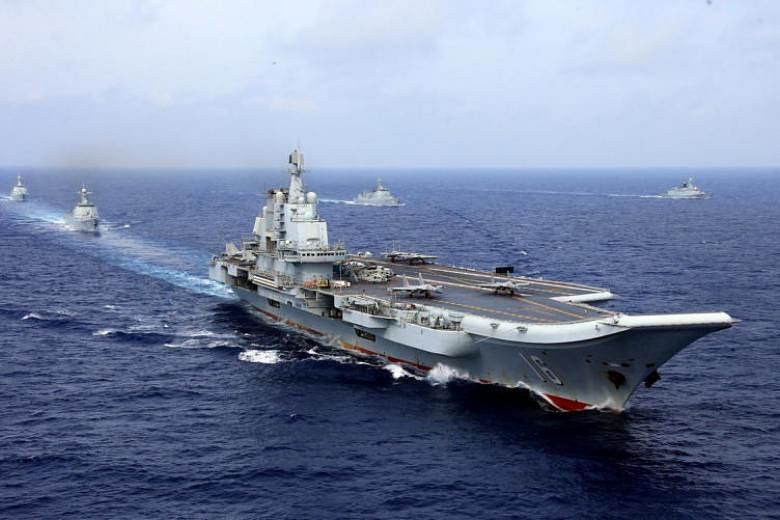TOKYO (THE YOMIURI SHIMBUN/ASIA NEWS NETWORK) - This can be considered part of China's strategy for expanding its military clout in rivalry with the United States. It is essential to be vigilant for any Chinese move that could drastically change the global security environment.
China's first domestically manufactured aircraft carrier has undergone sea trials. The carrier will enter service as early as next year.
It is China's second carrier following the Liaoning, whose hull was bought from Ukraine, refitted in China and put into commission in 2012.
The third carrier is now under construction in Shanghai, while a project to build a nuclear carrier has also surfaced.
The country plans to have four or more carriers in the future and aims to operate an aircraft carrier group, including submarines and destroyers.
Although there are many tasks that need to be addressed in terms of performance, such rapid preparation is unprecedented.
Chinese President Xi Jinping, who is also head of the Chinese military, gave an admonitory address at a naval review in the South China Sea in April, calling for efforts to build a world-class navy.
There is no doubt that he considers aircraft carriers as a core of his country's buildup of military capability alongside strategic missiles and submarines in which U.S. forces are overwhelmingly dominant.
The US Navy has 11 aircraft carriers, the largest number owned by a single country in the world, and plans to add one more.
India, which is beset with territorial and other issues with China, is moving ahead with building an aircraft carrier.
It is a matter of concern that China's moves could spur an arms race.
The Xi administration envisages a strategy of securing command of the air and seas, going beyond the "first island chain" - China's original defense line linking the south of Kyushu, Okinawa, Taiwan and so forth, all the way to the "second island chain," covering the Izu Islands down to Guam.
The Liaoning has repeatedly been utilised for fighter jet takeoff and landing drills in the South China Sea and the Pacific.
With an eye on unification with Taiwan, the aim of enhancing the ability to deter an intervention by U.S. forces is obvious.
During the Taiwan Strait crisis in 1996, when China intimidated Taiwan with missile drills, the United States sent two aircraft carriers to contain China.
China seems to want to ward off such a development from re-occurring.
There is also the possibility of China operating its aircraft carrier as standard practice in the South China Sea, thus reinforcing its effective control over the area.
U.S. forces have conducted patrols around artificial islands China built in order to maintain freedom of navigation.
A rise in regional tensions would be inevitable.
It cannot be overlooked that China, in exchange for economic assistance, is moving ahead with developing harbours that can be converted into military strongpoints in coastal countries, from the South China Sea down to the Indian Ocean.
Free passage of sea traffic routes must not be hindered by China's enhanced influence.
The actual state of the Chinese armed forces in terms of equipment and other factors remains opaque.
The Japanese government must demand that China explain the objective of its military buildup through resumed dialogue of top-level officials.
It is also important for the U.S. forces and the Self-Defence Forces to enhance their ability to deal with these developments.
The Yomiuri Shimbun is a member of The Straits Times media partner Asia News Network, an alliance of 23 news media entities.

